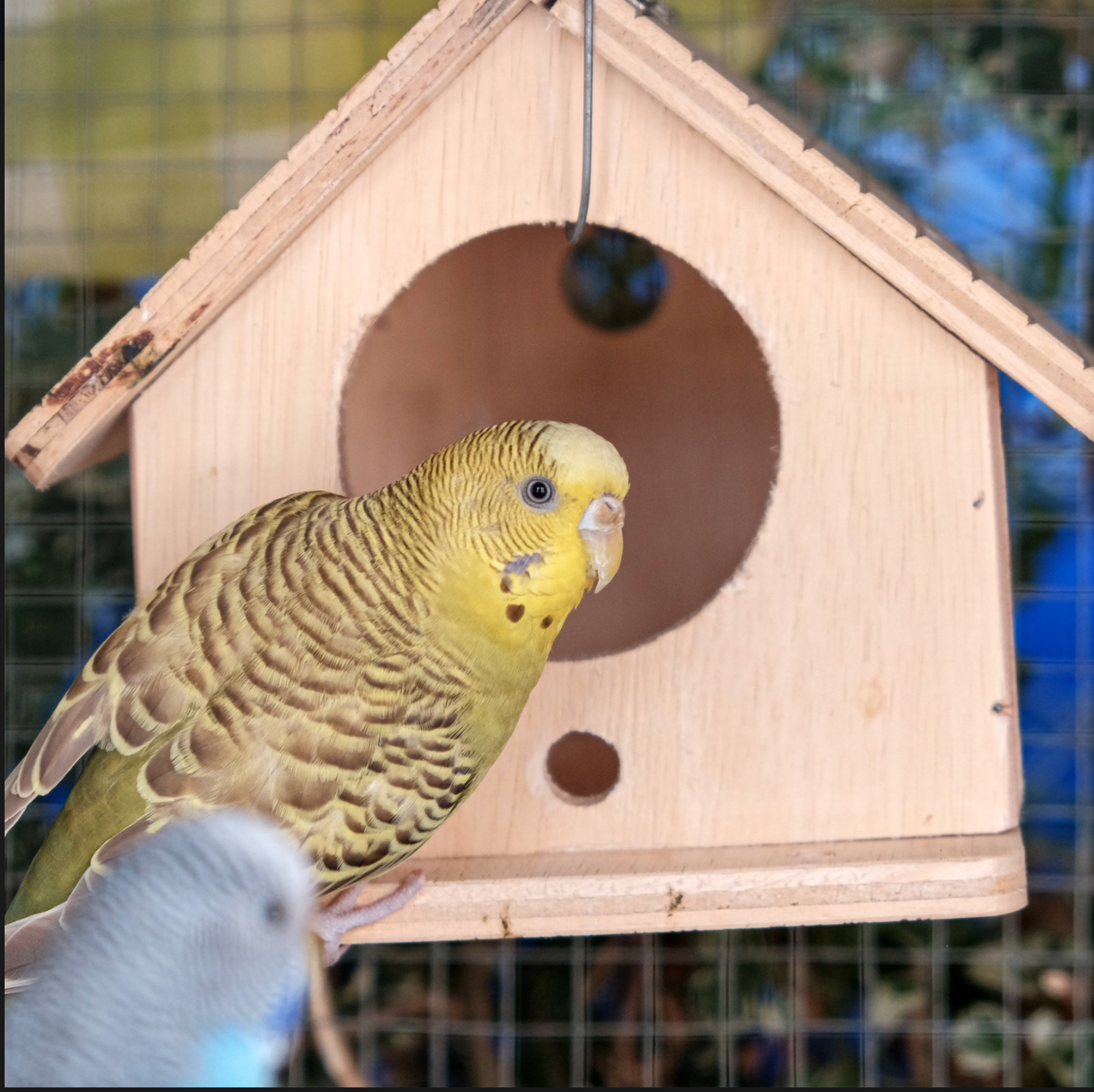SAFE HOMES FOR PET BIRDS

SAFE HOMES FOR PET BIRDS
SUMMARY
Create a safe and comfortable environment for your pet bird with this essential guide. Learn how to bird-proof your home, choose the right cage setup, eliminate household hazards, and provide a secure space where your feathered friend can thrive.
FEATURES
- Bird-Proofing Tips: Identify and remove common household dangers.
- Cage Safety Guidelines: Choose the right size, materials, and placement for your bird’s cage.
- Non-Toxic Materials: Learn which household items, plants, and foods are safe for birds.
- Air Quality and Ventilation: Prevent exposure to harmful fumes and airborne toxins.
- Supervised Out-of-Cage Time: Ensure safe exploration and exercise in your home.
- Preventing Escapes: Secure doors, windows, and other exit points.
- Fire and Emergency Safety: Prepare for unexpected situations to protect your bird.
- Safe Interaction with Other Pets: Introduce birds to other animals in a controlled way.
DESCRIPTION
Providing a safe home for your pet bird is essential for its health and well-being. Birds are naturally curious and can easily encounter household hazards, so creating a secure environment is key to preventing accidents and ensuring a stress-free life.
Bird-proofing your home starts with identifying common dangers. Ceiling fans, open windows, electrical cords, and small objects that can be swallowed all pose risks. Birds should never be left unsupervised in rooms with mirrors, open water sources like sinks or aquariums, or spaces where they might get trapped behind furniture. Keeping your bird’s living space clutter-free and well-organized helps minimize risks.
Choosing the right cage is one of the most important aspects of bird safety. The cage should be spacious enough for free movement, with horizontal bars for climbing and multiple perches of different textures and thicknesses to promote foot health. Avoid cages with sharp edges, peeling paint, or bars that are too widely spaced, as birds can get their heads or feet stuck. Position the cage away from direct sunlight, drafts, and high-traffic areas to provide a calm and comfortable setting.
Many common household items can be toxic to birds. Certain plants, such as lilies, oleander, and philodendrons, should be kept out of reach, as they can cause serious illness if ingested. Non-stick cookware releases harmful fumes that can be fatal to birds, so it's best to use alternative materials like stainless steel. Cleaning products, air fresheners, scented candles, and aerosol sprays should also be avoided in areas where birds are housed.
Air quality is another critical factor in bird health. Birds have highly sensitive respiratory systems, making them vulnerable to smoke, strong odors, and airborne pollutants. Ensuring good ventilation and avoiding exposure to cigarette smoke, incense, and chemical fumes will help keep your bird healthy. A HEPA air filter can be beneficial for maintaining clean indoor air.
Allowing birds supervised out-of-cage time is great for exercise and mental stimulation, but it must be done safely. Close all doors and windows before letting your bird out, and remove hazards such as small objects, toxic plants, and unattended food. If you have other pets, introduce them to your bird gradually and always supervise interactions to prevent accidents.
Preventing escapes is crucial for bird safety. Birds can be startled and fly through open doors or windows in an instant. Installing secure screens, keeping doors closed, and training birds to return to their cage on command can help prevent accidental escapes.
Being prepared for emergencies is another important aspect of bird safety. Having a fire escape plan that includes a travel cage for your bird, keeping emergency vet contacts handy, and knowing how to respond to health crises can make all the difference in protecting your pet.
By taking these precautions—bird-proofing your home, providing a safe cage setup, eliminating toxic materials, maintaining good air quality, supervising out-of-cage time, and planning for emergencies—you can create a secure and enriching environment where your pet bird can live happily and healthily.
- sri palani

Comments 0